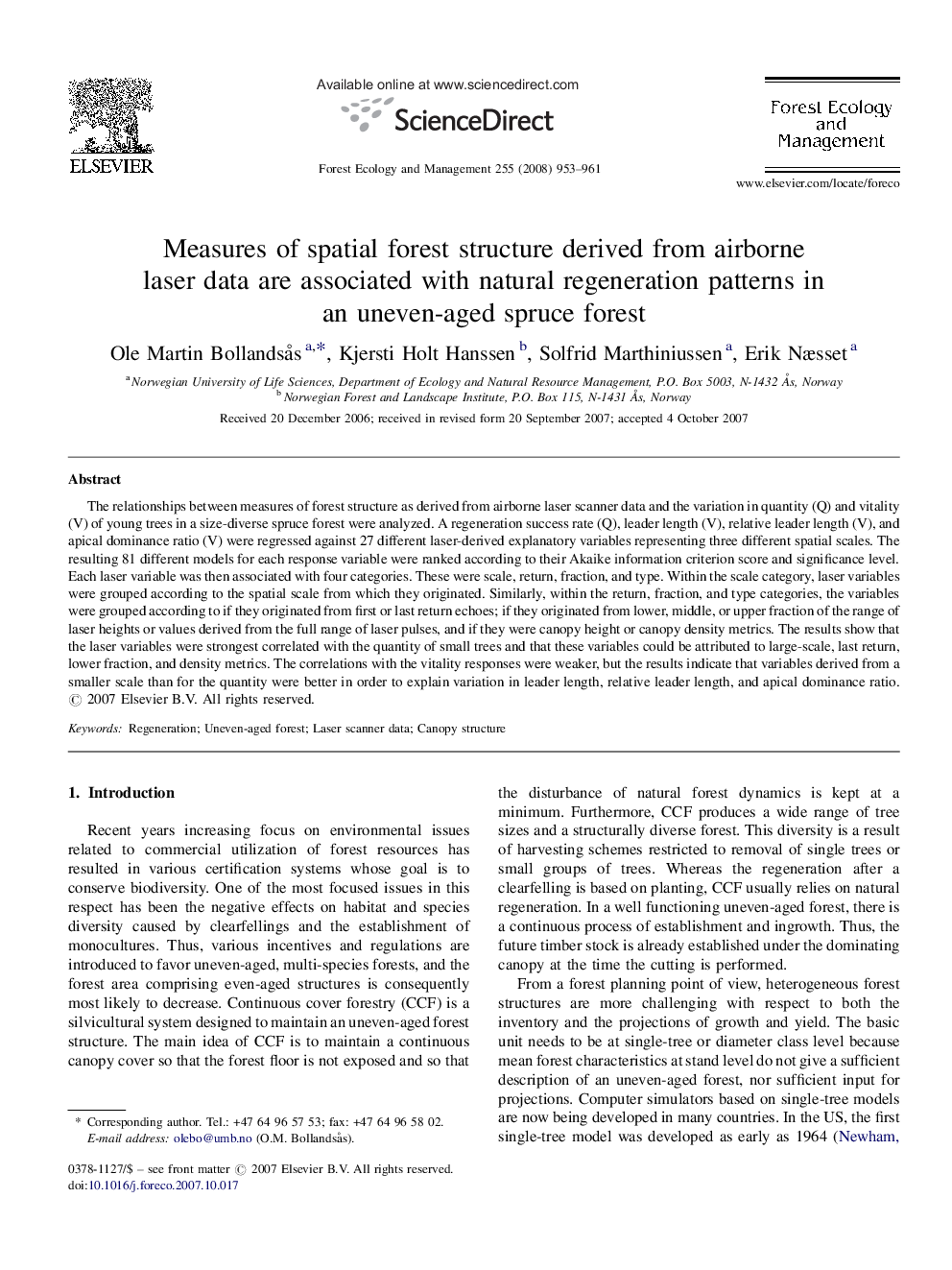| Article ID | Journal | Published Year | Pages | File Type |
|---|---|---|---|---|
| 89873 | Forest Ecology and Management | 2008 | 9 Pages |
The relationships between measures of forest structure as derived from airborne laser scanner data and the variation in quantity (Q) and vitality (V) of young trees in a size-diverse spruce forest were analyzed. A regeneration success rate (Q), leader length (V), relative leader length (V), and apical dominance ratio (V) were regressed against 27 different laser-derived explanatory variables representing three different spatial scales. The resulting 81 different models for each response variable were ranked according to their Akaike information criterion score and significance level. Each laser variable was then associated with four categories. These were scale, return, fraction, and type. Within the scale category, laser variables were grouped according to the spatial scale from which they originated. Similarly, within the return, fraction, and type categories, the variables were grouped according to if they originated from first or last return echoes; if they originated from lower, middle, or upper fraction of the range of laser heights or values derived from the full range of laser pulses, and if they were canopy height or canopy density metrics. The results show that the laser variables were strongest correlated with the quantity of small trees and that these variables could be attributed to large-scale, last return, lower fraction, and density metrics. The correlations with the vitality responses were weaker, but the results indicate that variables derived from a smaller scale than for the quantity were better in order to explain variation in leader length, relative leader length, and apical dominance ratio.
